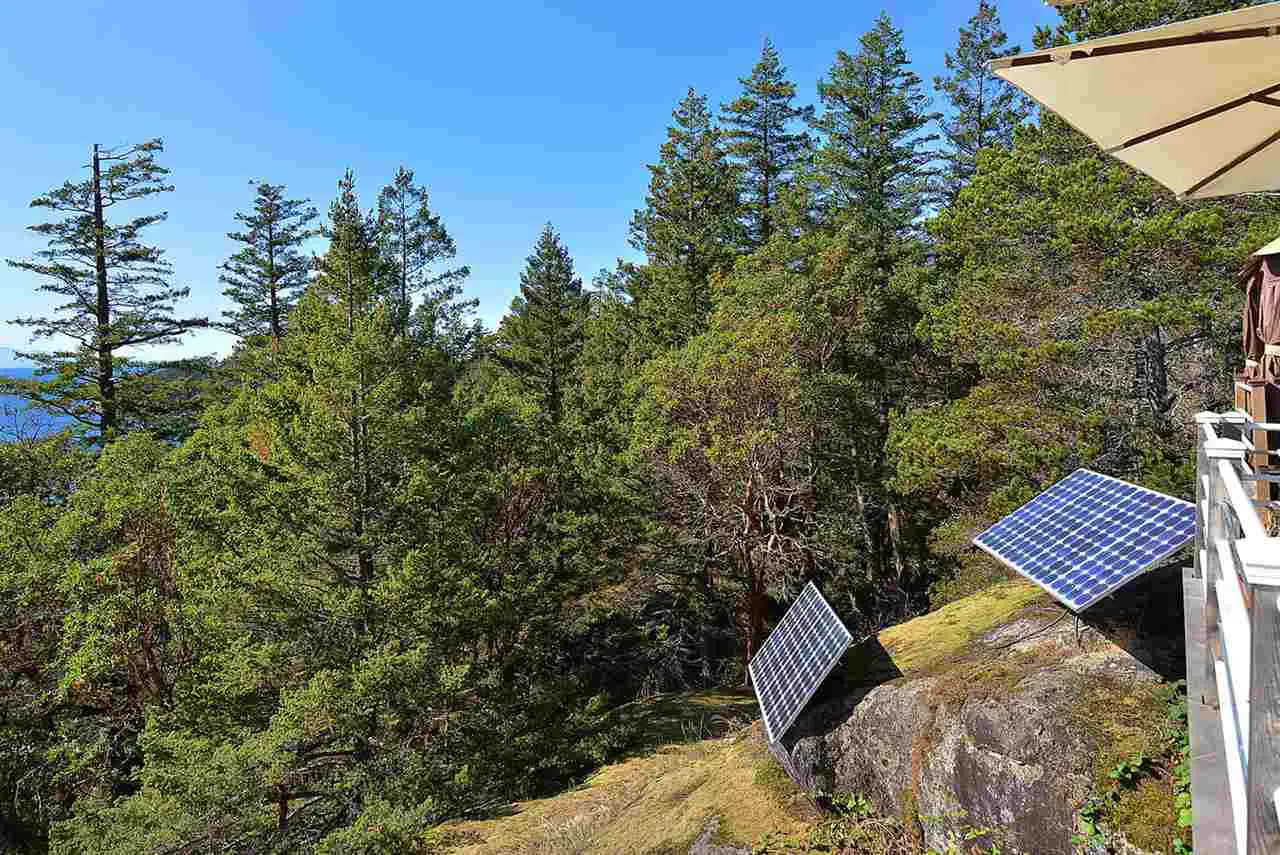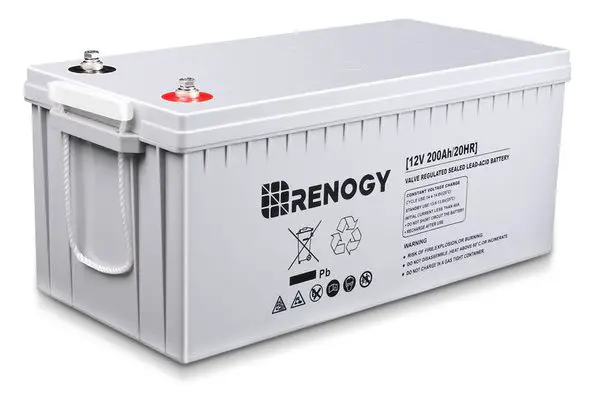Covert a home to solar power is definitely getting popular. It does involve some investment to get started whether you are a home owner or installing solar panels on rental homes.
If you're a real estate investor, the solar panels now will save money for the users later.
This process is not as complex as you might think, and the long-term benefits of using solar power make it well worth the investment.
How a solar-power system works.
It's a simple process: A solar power system converts sunlight into electricity.
Sunlight hits the solar panels and is absorbed by the cells. The electric current converts it from direct current (DC) to alternating current (AC).
The AC electricity can now be used to power electrical items in your home or business, or it can be fed back into the utility grid.
That's all there is to it. The only thing more difficult is choosing the right components and learning what each piece of the system does.
What you need to set up a solar system for your house.
Taking advantage of solar is a great way to save money and help the environment.
To set up a solar system, you will need to purchase solar panels and have them installed on your roof. You will also need to buy an inverter, which converts the direct current (DC) generated by the panels into alternating current (AC). Batteries are optional. However, additionally, there is other equipment necessary to complete the setup.
Here is a detailed outline of what you need for your solar-powered home:
SOLAR PANELS:
The two types of solar panels available on the market are:
Monocrystalline panels are made from a single silicon crystal and are typically more efficient than polycrystalline panels. However, they also tend to be more expensive.
Polycrystalline panels are made from multiple silicon crystals, which are less expensive but less efficient.
You can learn about the differences between Monocrystalline, Polycrystalline and Amorphous solar cells here.
I decided to go with sixteen 100-watt 12-volt monocrystalline panels.
Choose the right location for your solar panels.
The location of your solar panels is crucial, as they will need to be in a place where they will get direct sunlight for most of the day. If possible, try installing your panels on your home's roof so that trees or other buildings do not obstruct them.

My Solar Panel Set-Up on the island
In my case, I decided to forego installing the panels on the roof since I wanted to use my roofing system as my water catchment solution. Instead, I mount the panel array on four-foot poles drilled into the rock, making it easy to reposition them to take advantage of the different angles of the sun during the year. It also made keeping the panels free from snow and cleaning them a lot easier as well.
You can learn how to clean your solar panels here.
BATTERY SELECTION:

If your solar energy is only used to augment power supplied by your utility company, the batteries may not be necessary. However, if you are setting up an off-grid home or cabin, as I was, deep-cycle batteries are essential for storing energy.
Deep-cycle batteries are designed to store large amounts of electricity for long periods and are perfect for solar-powered homes. As an off-grid component, after the solar panels, the batteries are the most critical part of the system.
You can learn more about the difference between normal and deep-cycle batteries here.
There is a myriad of battery types available for use in a solar setup, but here are two of the most popular:
Lead-Acid
Lead-acid batteries have long been the traditional choice, but they have several disadvantages. For one thing, they can't be fully discharged without damaging the battery. This means that you're never really getting the battery's total capacity. In addition, lead-acid batteries are susceptible to deep discharge damage, which can shorten their lifespan.
Lithium-Ion
Lithium batteries have many advantages over traditional lead-acid batteries. One of the most significant benefits is that they can be fully discharged without damaging the battery. This means you have the full capacity available to use, which can be a significant advantage in applications where you need to draw a lot of power, such as in your home.
I opted for twelve 2-volt 900 amp-hour lead-acid batteries. The type typically used in electric forklifts. I wired them in parallel and series to give me a 12-volt system.
INVERTERS: Converting DC power to AC
As previously mentioned, an inverter is necessary to convert the DC power generated by the solar panels into AC power, which is used to run appliances in your home.
They are an essential part of any solar-powered home system and come in various sizes to suit your needs. Inverters can be used to provide power to an entire home or just a portion of it, and importantly, they can also be used to charge batteries for backup power during outages.
Sine wave inverters are considered the highest quality type of inverter and should be your first option when choosing an inverter.
They produce a clean AC sine wave that is identical to the AC power supplied by your utility company. As a result, sine wave inverters are more efficient and provide smoother and quieter operation.
My inverter of choice was the Trace SW 4024. It has since been replaced by the Xantrex SW 4024. It's essentially the same unit; a sine wave inverter providing 4000 watts of continuous power.
SOLAR CHARGE CONTROLLER:
A solar charge controller regulates the flow of electricity from the panels to the batteries and prevents overcharging. Quite literally controlling the amount of charging the batteries receive to avoid damage.
It is typically placed between the panels and the batteries but can also be placed between the batteries and the inverter. This ensures that the batteries always receive a consistent power flow and helps extend their lifespan.
There are two types of solar charge controllers: the PWM (pulse width modulation) and the MPPT (maximum power point tracking).
The PWM controller is the most common and least expensive type. It regulates the voltage and current going to the batteries by turning the solar panels on and off.
The MPPT controller is more expensive than a PWM controller, but it can harvest more power from the solar panels by tracking the panel's maximum power point. This results in better charging efficiency and can help increase the system's overall power output.
If you're installing a solar charge controller in your solar setup, choosing one compatible with your batteries and panels is essential. It's also important to ensure that the controller is sized appropriately for your system, so be sure to choose one appropriate for your needs.
I selected a 100 amp 30-volt MPPT controller to install in my system.
OTHER EQUIPMENT:
In addition to solar panels, batteries, and an inverter, other equipment is necessary to complete your solar-powered home setup.
Including:
Wiring:
Wiring is an essential but often overlooked component in the budget for solar power conversion.
They connect the solar panels to the charge controller, batteries, and inverter. Because of this, they carry much higher amperages than household wires, so the wire sizes must be of a much larger gauge. In addition, the wiring must be weatherproof and, depending on the placement of the equipment, could end up having to cover a long distance.
As a result, the cost of wiring and cables can often make up a significant portion of the overall budget.
Learn more about parallel vs series wiring for solar panels here.
Mounting Hardware:
Solar panels must be mounted on something, and that something needs to be securely attached to your roof or another structure. The type of mounting system you need will depend on the size and weight of the panels and other factors.
Check out our guide on the best solar panel mounts here.
Generator:
In a typical utility-tied system, a generator is not essential, but if you are off-grid, especially in areas with definite fall and winter seasons, they are invaluable.
A generator is used to recharge batteries when the sun isn't shining. And while it's, unfortunately, the "dirty" part of an otherwise clean energy solution, it is absolutely critical as a backup source of power when you're living off the grid.
I relied on the Yamaha EF4500ISE to supply all my backup power and charging needs. It's an excellent choice as it provides a clean sine wave source allowing you to run sensitive electronic devices without any problems.
COST BREAKDOWN:
The cost of solar power home systems has come down in recent years, making them more accessible to homeowners. To give you an idea and help you decide if converting your home to solar power is for you, here is a breakdown of the average cost of the necessary components (I'll include my approximate costs as well):
Solar Panels:
The average cost of solar panels is $2.80 per watt, meaning a 200-watt panel would cost around $560.
Powering an average home would require between 10 and 15 panels for a modest setup putting the average cost of the solar panels between $5600-$8400.
Approximate cost of my solar array - $4000.
Batteries:
The average battery cost is $100-$200 per kilowatt-hour (kWh), meaning a battery with a capacity of 10 kWh would cost $1,000-$2,000.
My battery setup - $6600.
Inverter:
The average cost of an inverter is $0.50-$1.00 per watt, meaning a 2,000-watt inverter would cost around $1,000-$2,000.
Renogy Inverter - approximately $3500.
Wiring:
The wiring cost can vary significantly depending on the distance the wiring needs to run and the type of wire used. Expect to spend around $1,000-$2,000 on wiring for a typical home.
I spent about $1500 on wiring and cabling.
Charge Controller:
The average cost of a charge controller is $50-$200, depending on the features and capacity.
My charge controller - $230.
Generator:
The average cost of generators is $500-$5,000, depending on the features and power.
The cost of the Yamaha EF4500iSE at the time of my build was $3800.
Mounting Hardware:
The cost of mounting hardware can vary significantly depending on the type of roof and the number of panels installed. Expect to spend around $500-$2,000 on mounting hardware.
My costs for mounting hardware were approximately $700.
Installation:
The installation cost can vary significantly depending on the complexity of the installation. Expect to spend around $1,000-$5,000 on installation.
In my case, I did the complete installation myself.
 Living Off-Grid allows you to immerse yourself in nature.
Living Off-Grid allows you to immerse yourself in nature.Total Cost:
The cost of solar power has decreased significantly in recent years, making it a more viable option for homeowners. Despite that, it's still a significant expense, with the average cost of a complete solar power system coming in at around $10,000-$20,000.
The approximate cost for my solar power installation - approximately $21,330.
However expect this cost to continue to trend downwards in the following years.
